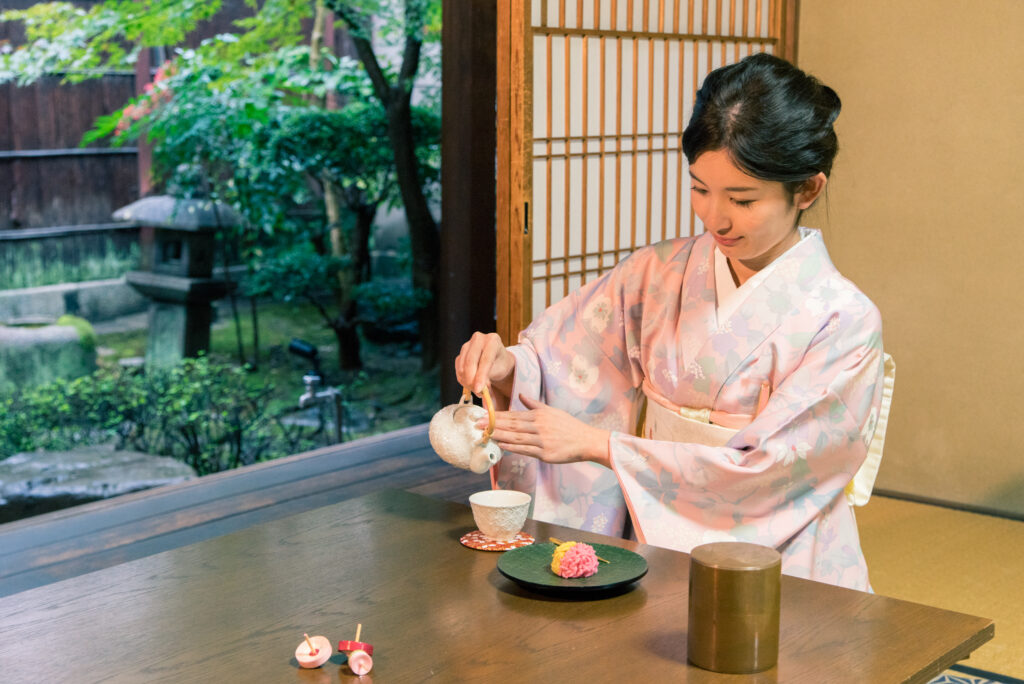Blog
Mini Kyoto traditional crafts quiz
2022/05/24

Hello reader,
Today, let’s play a game. Please look at the image above. How many Kyoto traditional craft items can you find on it? Try to find as many as you can before reading the answer below!
.
.
.
.
.
.
.
.
.
.
→ Kimono (decorated with Kyoto yuzen dyeing technique): maybe the most obvious item of all captured here.
→ Obi sash (an example of Nishijin woven textiles): you might think that it forms a set with the kimono, but it’s a separate item and most of the time bought independently from the kimono. Some ateliers specialise in obi sash weaving only!
→ Kyoto folding fan (Kyo-sensu): it’s tricky to find it on the photo, but there is a small one tacked onto the obi sash.
→ Tea canister: this particular one was made by Kaikado, a Kyoto company specialising in tinplate canisters since 1875.
→ Kyoto pottery (Kyo-yaki・Kiyomizu-yaki): this elegant white teapot and teacup set was made by Koshun-gama.
→ Kyoto confectionery (Kyo-gashi): yes, this Kyoto-style Japanese sweet is an example of one of the edible Kyoto traditional crafts (together with local cuisine, pickles and sake).
→ Kyoto lacquerware (Kyo-shikki): small plate for Kyo-gashi sweet is actually a piece of lacquerware.
→ Kyoto bamboo crafts (Kyo-take-kogei): hidden behind the sweet is kashikiri, or dessert knife, an indispensable tool for eating Japanese soft confectioneries.
→ Kyoto spinning top (Kyo-koma): added just for fun, because why not?
→ Garden: a fine example of landscape gardening (zoen), which Kyoto is famous for.
→ Bamboo fence: a specimen of Kyo-meichiku, or Kyoto bamboo industry.
→ Stone lantern: it belongs to Kyoto stone craft (Kyo-ishi-kogeihin) tradition.
→ Sliding door: it was crafted using Kyoto mounting (Kyo-hyogu) skills and techniques.
→ Tatami mat (Kyo-tatami): another key element of Japanese traditional interior design.
→ The room/building: it was built using Japanese traditional architecture (dento kenchiku) techniques.
Total count: 15 examples of Kyoto traditional crafts. How many could you find on your own?
Later on, we’ll explore the role of the tea ceremony in the development of crafts in Kyoto. Meanwhile, have a fabulous week!
Image: Kyoto Museum of Crafts and Design
Words: Anastasiya Bulkavets (ArigatoCreative.co)